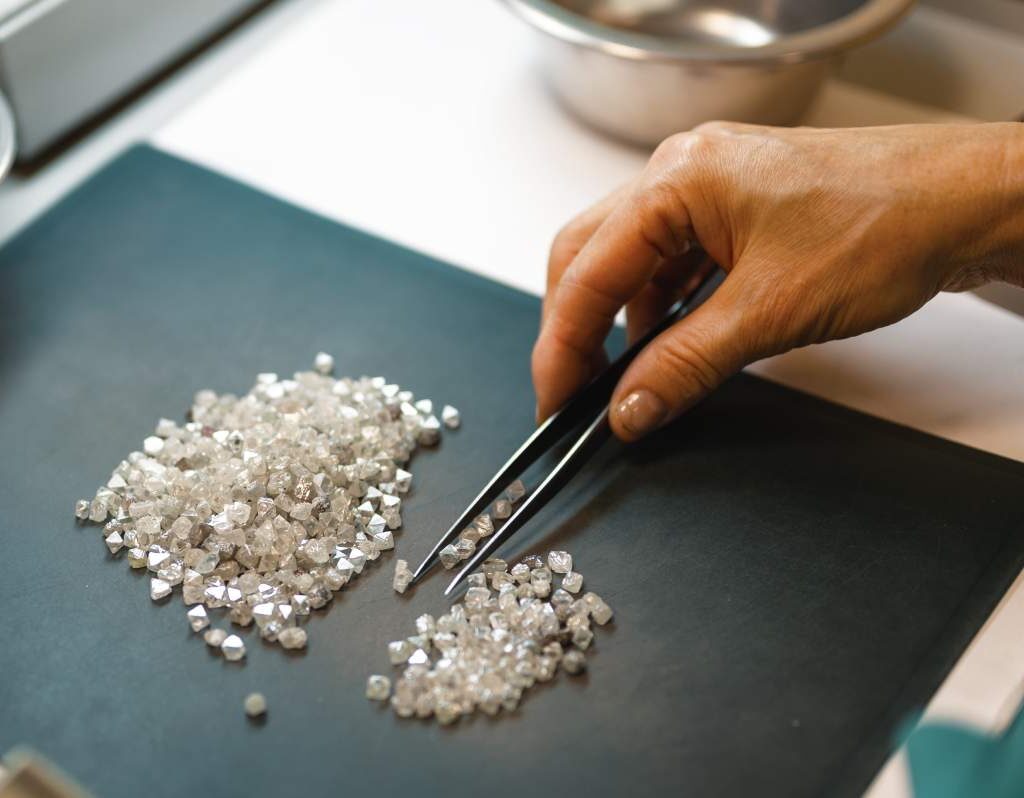HOME > NEWS
Understanding the Continued Decline in Diamond Prices: Global Trends and the Chinese Influence
The global diamond industry, long synonymous with stability and prestige, is currently experiencing a notable downturn. Behind the persistent diamond price decline lies a confluence of economic, cultural, and geopolitical factors—chief among them, the evolving dynamics within the Chinese market. Once the world’s second-largest consumer of polished diamonds, China’s shifting landscape is reshaping the international trade of these coveted stones.

Post-Pandemic Ripples in the Chinese Jewellery Market
At the heart of the current slump in the diamond industry is the lingering economic fallout from China’s extended COVID-19 lockdowns. Unlike many Western nations, China did not implement widespread financial stimulus programs. As a result, Chinese workers bore the brunt of income loss and employment insecurity, leading to a decline in discretionary spending. One of the most visible casualties of this economic strain has been the Chinese jewellery market.
Simultaneously, the Chinese property sector—a traditional wealth reservoir for households—has suffered dramatic contractions. Property investments, once a cornerstone of middle-class wealth building, plummeted by more than 60% compared to pre-pandemic levels. With both income and wealth buffers eroded, luxury purchases like diamonds have become less of a priority.
Cultural Conservatism and Cautious Spending
Chinese consumers are historically prudent savers, and this trait has only been reinforced by economic uncertainty. With rising expectations for out-of-pocket expenses in education, healthcare, and housing, precautionary savings have taken precedence over indulgent purchases. This cultural inclination, combined with economic anxiety, has stifled demand for high-end jewellery.
Additionally, the luxury goods demand in China has been curtailed by another important factor: a dramatic decline in marriage rates. According to China’s National Bureau of Statistics, only 6.83 million couples registered for marriage in 2022—a record low. With fewer weddings taking place, demand for engagement rings and wedding jewellery has contracted significantly, further impacting the polished diamond market.
The Disruptive Rise of Lab-Grown Diamonds
The emergence and rapid adoption of lab-grown diamonds have also had a disruptive effect on the industry. As technological advances make these diamonds virtually indistinguishable from natural ones, consumers are increasingly uncertain about what to purchase. This confusion has diluted brand loyalty and weakened traditional value perceptions, particularly among younger buyers seeking affordable alternatives.
Major retailers, including Hong Kong-based Chow Tai Fook, have acknowledged this shift, citing lab-grown diamonds as a contributing factor to the softening of consumer sentiment toward natural stones. This trend is global but has been particularly pronounced in China, where technological innovation is welcomed and rapidly adopted.
Gold as the Preferred Safe Haven
In times of uncertainty, investors and consumers alike turn to assets perceived as secure. Gold, with its timeless reputation as a safe haven investment, has surged in popularity among Chinese buyers. The recent rally in gold prices has resulted in a boom in gold jewellery sales, diverting both attention and disposable income away from diamonds.
Gold’s appeal lies not only in its aesthetic value but also in its perceived ability to preserve wealth in periods of geopolitical tension. With wars in Ukraine and the Middle East amplifying global instability, gold has outshone diamonds as the preferred store of value for many Chinese households.
The Broader Global Impact
China’s economic transformation has had resounding effects beyond its borders. Once a robust pillar of the global diamond industry, China’s reduced appetite for luxury goods has destabilized the entire supply chain. In 2023, the four largest Chinese jewellery firms reported a staggering 40% decline in diamond jewellery sales.
This contraction has reverberated through global markets, prompting concerns among miners, polishers, and retailers. The economic impact on diamonds has been substantial, especially for economies heavily reliant on gemstone exports. For these stakeholders, the Chinese slowdown is more than a temporary hiccup—it signals a possible reconfiguration of the global diamond industry trends.
The Road Ahead: Challenges and Opportunities
While the current landscape appears bleak, it’s essential to view the diamond price decline within the broader context of cyclical economic behavior. History has shown that luxury markets, particularly those rooted in emotional and symbolic value, tend to rebound. As economic conditions stabilize and consumer confidence improves, so too may demand for diamonds.
Moreover, the industry has an opportunity to educate and reassure consumers about the value and uniqueness of natural stones in comparison to synthetic alternatives. Brands that emphasize heritage, craftsmanship, and ethical sourcing may regain ground in a market increasingly concerned with authenticity and meaning.
Conclusion: A Time for Patience and Perspective
The interplay between China’s economic slowdown, evolving consumer behavior, and global shifts in investment preferences has culminated in a sustained diamond price decline. However, diamonds—long symbols of permanence and value—are likely to recover their luster as market dynamics eventually shift.
For investors and stakeholders with a long-term outlook and strategic foresight, this may be a moment not of retreat, but of re-evaluation. While the current chill in the polished diamond market is real, the inherent allure of diamonds—and their potential for resurgence—remains undiminished.
